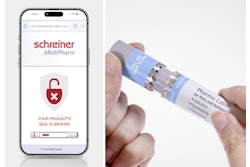
Children can get five to 10 colds each year, so it’s not surprising that adults often turn to over-the-counter cough and cold medicines to relieve their little ones’ symptoms. But a new University of Michigan poll shows that many are giving young kids medicines that they should not use.
More than 40% of parents reported giving their children under age 4 cough medicine or multi-symptom cough and cold medicine, according to the latest University of Michigan C.S. Mott Children’s Hospital National Poll on Children’s Health. Twenty-five percent gave those children decongestants. Read the full report here.
In 2008, the U.S. Food and Drug Administration issued an advisory that these OTC medicines not be used in infants and children under age 2. They have not been proven effective for young children and may cause serious side effects, says Matthew M. Davis, M.D., M.A.P.P., director of the C.S. Mott Children’s Hospital National Poll on Children’s Health.
In response to the FDA, manufacturers of OTC cough and cold products changed their labels back in 2008, to state that the medicines should not be used for children under 4 years old.
“These products don’t reduce the time the infection lasts and misuse could lead to serious harm,” says Davis. “What can be confusing, however, is that often these products are labeled prominently as ‘children’s’ medications. The details are often on the back of the box, in small print. That’s where parents and caregivers can find instructions that they should not be used in children under 4 years old,” Davis says.
The side effects from use of cough and cold medicines in young children may include allergic reactions, increased or uneven heart rate, drowsiness or sleeplessness, slow and shallow breathing, confusion or hallucinations, convulsions, nausea, and constipation.
The poll found that use of the cough and cold medicines in children age 4 and under did not differ by parent gender, race/ethnicity, or by household income.
“Products like these may work for adults, and parents think it could help their children as well. But what’s good for adults is not always good for children,” says Davis.
Davis says parents need to be vigilant about reading the directions and should always call their pediatrician or health care provider about questions regarding over-the-counter medications.
“Because young children often suffer from cold-like symptoms, more research is needed to test the safety and efficacy of these cough and cold medicines in our littlest patients,” Davis says.
Protecting kids from fake pharmaceuticals
As part of its ongoing BeSafeRx: Know Your Online Pharmacy effort to protect consumers from the risks of fake online pharmacies, FDA has developed a new, easy-to-use interactive map tool that lets consumers locate a state-licensed online pharmacy, providing a quick way to ensure the site you order from is safe and legal.
Fake online pharmacies use sophisticated marketing efforts or phony Web storefronts to appear legitimate, so FDA recommends confirming that an online pharmacy is licensed in the U.S. Patients who buy medicines from these fraudulent Web sites may be putting their health at risk because the products may contain the wrong ingredients, or too little or too much of the active ingredient, or they might be made with other harmful substances. As a result, you may not receive the therapy you need, or you may experience unexpected side effects and possibly get worse.
That’s why FDA launched the BeSafeRx: Know Your Online Pharmacy Web site, which offers resources for consumers, health professionals, and organizations on the risks of purchasing from a fake or fraudulent online pharmacy, how to identify them, and how to find legitimate online pharmacies from which to purchase medications. In addition to the new pharmacy map, fact sheets, digital toolkits, videos, patient discussion guide, table tents, palm cards, stickers and other materials are available on the site.






















